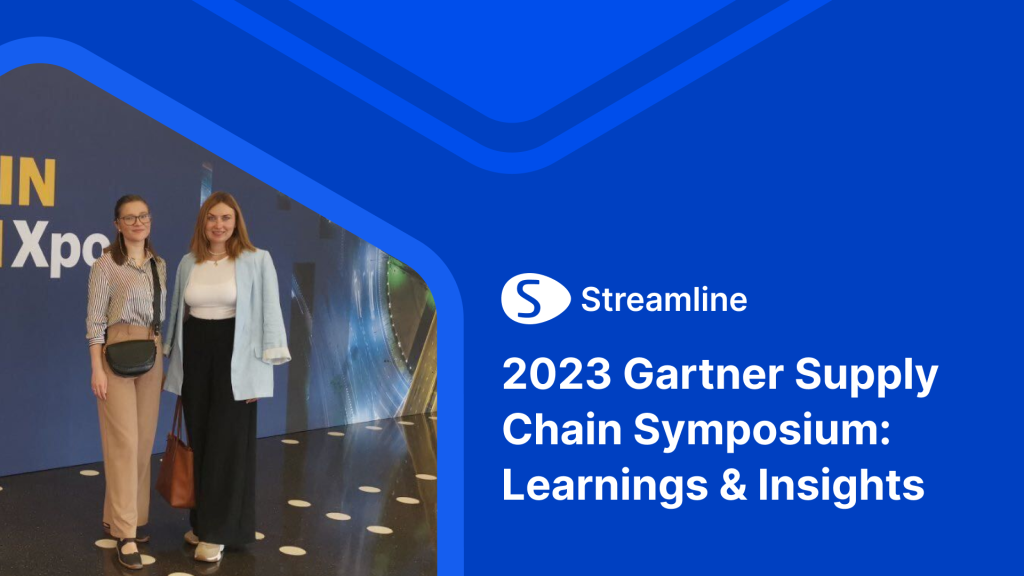The 2023 Gartner® Supply Chain Symposium: Learnings and Insights

One of the surprising insights from the symposium is that by 2026, 95% of companies will have failed to enable end-to-end (E2E) resiliency in their supply chains. This means that businesses need to ensure that their supply chain is adaptable and able to bounce back from disruptions quickly. To achieve this, companies must focus on leveraging digital solutions of new generation that ensure fast implementation, user adoption and transparency across the entire supply chain.
One of the surprising insights from the symposium is that by 2026, 95% of companies will have failed to enable end-to-end (E2E) resiliency in their supply chains. This means that businesses need to ensure that their supply chain is adaptable and able to bounce back from disruptions quickly. To achieve this, companies must focus on leveraging digital solutions of new generation that ensure fast implementation, user adoption and transparency across the entire supply chain.
Another vital focus area that emerged during the symposium is the evolution of Digital Twins. Digital Twins are moving beyond just product applications to include customer applications. They are crucial in supporting growth, speed, and performance. CSCOs (Chief Supply Chain Officers) must integrate the digital twin of the customer into their digital supply chain twin to deliver growth. By doing so, they will capture the complete end-to-end customer experience and fine-tune their supply chain to meet ever-changing customer expectations.
Supply Chain AI is another growing priority that is transforming the industry. Supply chain leaders no longer view advanced analytics and big data as emerging technology areas, but as essential. Companies now see the use of AI as a well-defined goal. The symposium highlighted that automation is set to grow across supply chain functions. According to the statistics presented at the symposium,16% of companies today report a high level of decision-making automation in the planning function. However, in just three years, 65% of companies expect similar levels of automation.
A customer-centric and integrated supply chain approach is a new supply chain mission that has emerged. The symposium concluded that a customer-centric culture change is required along the entire chain for this to work. Supply chain teams must also accept the customer value perspective as their north star. Digital capabilities will allow supply chain management to overcome a purely functional view. Through digital platforms and tools, businesses can create an integrated approach that provides end-to-end visibility to all stakeholders, from suppliers and manufacturers to the end customer.
Conclusion
In conclusion, The 2023 Gartner® Supply Chain Symposium provided valuable insights, approaches, and trends that will inevitably shape how a business manages their supply chains. These trends include end-to-end resiliency, digital twin evolution, supply chain AI priorities, and a customer-centric culture change. Companies need to embrace these changes proactively to remain competitive and future-proof their supply chains. For businesses that choose to invest in these areas, they will likely reap significant rewards from improved supply chain efficiency, reduced costs, and higher customer satisfaction.
Too much manual work in Excel?
See what Streamline can do for you
- 99+% inventory availability.
- Up to 99% forecast accuracy.
- Up to 98% reduction in stockouts.
- Up to 50% reduction in excess inventory.
- 1-5 percentage points margin improvement.
- Up to 56X ROI in one year. 100% ROI in the first 3 months.
- Up to 90% reduction in time spent on forecasting, planning, and ordering.